Brian Keene's Blog, page 99
January 3, 2016
Three First Novels and a First Collection
Next week, I’ll announce my annual Top Ten Books of the Year (first on the podcast and then here on the blog). I’ve been making that list for over fifteen years now, and it was never more difficult than it was for this year. 2015 was an outstanding year for genre fiction — made doubly so by the influx of exciting new voices and authors.
Each year, I end up leaving a few books off the list because I am associated with them in some way. For example, while I’ve seen Geoff Cooper’s ANSWERS OF SILENCE (available in eBook and trade paperback) on a few 2014 and 2015 lists (and deservedly so), it was not included on mine because I edited it, and am therefore associated with it, and to include it on my list would reek of nepotism.
There are four such books for 2015 — three first novels and a first collection — each of which, were it not for my association with them, would have definitely made my Best of the Year list. Therefore, I thought I’d spotlight them here today, because they are books you should know about and read. (Coop’s is not included here, since the hardcover came out in 2014).
–
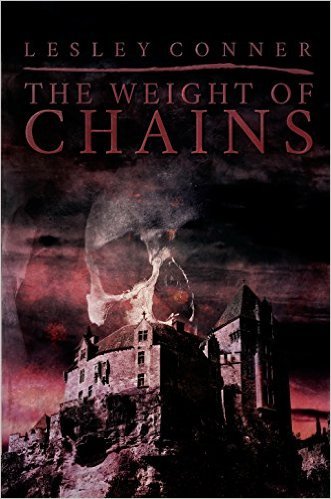 THE WEIGHT OF CHAINS
THE WEIGHT OF CHAINS
Lesley Conner
Sinister Grin Press
eBook – Free
Trade Paperback – $16.95
My association to this book is hard to convey, and I struggled for weeks with whether or not it was nepotism for me to include it on my list. Finally, I opted to include it here instead. I’d much rather have the Internet saying “Holy shit, Brian Keene was right about that book!” than “The only reason Brian Keene included it on his list is nepotism”. And trust me, this is a book you’ll want to talk about, once you’ve finished it.
J.F. Gonzalez served as a mentor to Lesley, and rightfully so. Reading her fiction, his influence is undeniable. But make no mistake — Lesley’s voice is strong and her own. THE WEIGHT OF CHAINS is her first novel, and it’s a ruthless, visceral, merciless bastard of a book. Those who enjoyed KING OF THE BASTARDS and have asked me where they can find more extreme horror – sword and sorcery mash-ups, look no further than this historical horror novel set in 1400’s France. Will most assuredly appeal to fans of Charlee Jacob, Robert E. Howard, Wrath James White, Karl Edward Wagner, or the aforementioned J.F. Gonzalez himself. Purchase it here.
–
 OF DARK AND YESTERDAY
OF DARK AND YESTERDAY
Michael T. Huyck
Crossroads Press
eBook – $3.99
Although best known as an editor, Michael T. Huyck is one of those writers who other writers read and rave about, but whose work has yet to cement itself onto the lips of readers. He also has the distinction of being a tattoo on my back (true story). This collection, for which I supplied the Introduction (thus my association with it and it’s inclusion here, rather than the other list), gathers together much of his best work, published over the last twenty years.
Blurring the lines of literary horror, surrealism, dark fantasy, and speculative science fiction, OF DARK AND YESTERDAY will appeal most to fans of classic-era Clive Barker and Neil Gaiman, Nick Mamatas, Jeff Vandermeer, China Mieville, and Peter Straub. Purchase it here.
–
 WE ARE MONSTERS
WE ARE MONSTERS
Brian Kirk
Samhain Publishing
eBook – $5.00
Trade Paperback – $17.99
I met Brian Kirk at the World Horror Convention in 2014. That was the weekend they gave me a Grandmaster Award. It was also the weekend that Jack Ketchum, Joe Lansdale, and F. Paul Wilson — independently of each other — reinforced for me how important it was that I pay it forward, doing for the next generation what they’d done for ours. As a start, I Introduced Brian to my old editor and friend Don D’Auria, and Brian sold him this novel (thus my association with it, and its inclusion here, rather than the other list).
WE ARE MONSTERS is one of the strongest debut novels in years. Doubt me? Have a look at the Amazon reviews. It’s a smart, scary, engrossing look at mental illness and the evil than men do, which will absolutely appeal to fans of Michael Marshall Smith or F. Paul Wilson. Purchase it here.
–
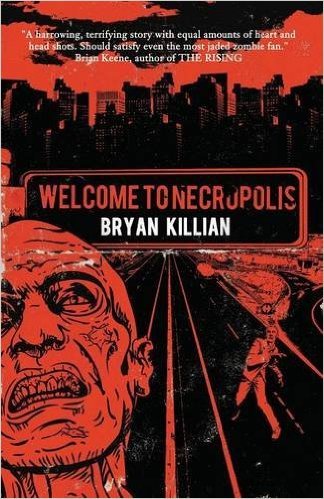 WELCOME TO NECROPOLIS
WELCOME TO NECROPOLIS
Bryan Killian
Deadite Press
eBook – $5.95
Trade Paperback – $11.95
Anyone who says there’s nothing new being done with zombies hasn’t read THE LAST WEEKEND by Nick Mamatas, LAND OF THE DEAD by Robert Swartwood, SLOWLY WE ROT by Bryan Smith, BRAINEATER JONES by Stephen Kozeniewski, or WELCOME TO NECROPOLIS by Bryan Killian. I wrote the Introduction for this debut novel (thus my association with it, and its inclusion here, rather than the other list).
Full of violent but beautiful imagery and description, and characters who you think you’ve seen before in zombie novels but haven’t, WELCOME TO NECROPOLIS pulls no punches and asks no quarter. It is THE RISING without a conscience, and if my main legacy was to inspire authors like Killian, then I am proud and honored indeed, and my work here is done (well…except for these other novels I have to finish.) Purchase it here.
January 2, 2016
Brave New World
Last Sunday, 66-year old Jose Sandoval Opazo, an electrician employed by Carnival Cruise Lines, was crushed to death by an elevator aboard the cruise ship Carnival Ecstasy. Witnesses described “a sheet of blood” and a “waterfall of blood” running out of the elevator. We know this because those same witnesses took extensive cell phone videos of the accident. Think about that for a moment. When witnessing this gruesome accident, these tourist’s first reaction was not to stare in shock, or scream, or hide their eyes, or safeguard their children, or run away, or try to help. Their reaction was to whip out their cell phones and do this.
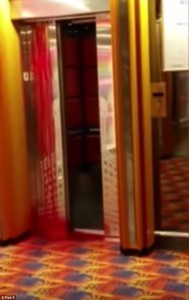
Two nights ago, as New Year’s Eve celebrants did their thing around the world, a young man collapsed onto a London street. The Daily Mail reports that he “drew concern from his friends” in their write-up. How concerned does that third friend sitting on the curb look? So concerned that he whips out his cell phone to type a text message, instead of using it to dial 911.
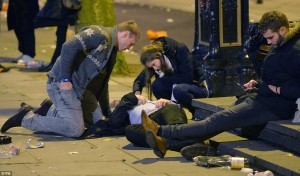
Our culture is bombarded every day by atrocity. ISIS has a multi-million dollar media production team that are churning out videos of them slaughtering people — beheadings, stonings, firing squads, throwing them off buildings, having them drawn and quartered, dragging them behind cars. The footage of this barbarity is as slick and well-produced as Disney’s new Star Wars movie, and is churned out to the Internet for people to watch on their cell phones.
But it doesn’t stop there. Traffic accidents, riots, robberies, fights, sexual assaults — in case after case after case we learn that a bystander, instead of displaying any normal human reaction (fight or flight) is instead simply whipping out their cell phone and capturing the moment — a moment which is then viewed a million times on other people’s cell phones. Perhaps this is a subconscious way of removing themselves from the danger or separating themselves from the trauma. Perhaps the phone acts as another witness, a safe space from which to view what’s happening around them.
Or maybe we’re just becoming desensitized as a culture.
Yes, pictures of atrocities always existed before, but they weren’t readily available, nor did the average person seek them out. The Allies hid the photographic evidence of the Nazi’s worst crimes to protect public sensibilities (and also because they feared their people would rightfully demand greater, swifter action). Rape porn (not the pretend fantasy stuff but actual rape committed on film) has existed since film was invented, but it’s not something you found by typing a simple Google search. Yes, Romans could watch people beat the shit out of each other until one of the opponents was dead in the Colosseum, but now we can watch the same thing filmed live from any city street on any Saturday night. And don’t get me started on the parents I see out with their children — all staring at their cell phones instead of talking to their kids.
What purpose, then, does horror fiction serve in this brave desensitized new world? From the time of cave paintings and The Epic of Gilgamesh, up through Melmoth the Wanderer and The Lottery to The Stand and A Head Full of Ghosts, horror fiction has served as a safe space — a way for artists to reflect and examine humanity’s fears. A way to examine what’s out there in the darkness, and to examine the darkness lurking inside all of us, as well.
If that darkness is now dispelled by the light from a touch screen, or worse, if that darkness is simply the heart and core of an entire generation of human beings, what happens next?
In talking about my new novel THE COMPLEX (hardcovers available here, paperback and digital later this year), S.J. Bagley of Thinking Horror said, “You’ve managed to fully integrate the emotional core of the work (particularly the sense of dis-belonging, willful exclusion, parental anxiety, and deep sense of close proximity social anxiety) with the plot happenings… This may be the best novel I’ve read from you.” Filmmaker Mike Lombardo said, “The narrative perspective is removed — cold, like a camera lens, which makes it that much more powerful.”
Now, I don’t claim that THE COMPLEX was an examination of this new, seemingly desensitized culture we’re living in. Or, at the very least, it’s not what I consciously set out to write about. And yet, it’s there in the subtext, unknown to me, the artist, but readily apparent to readers. It’s also there in Paul Tremblay’s A HEAD FULL OF GHOSTS and Bryan Smith’s SLOWLY WE ROT, if you look for it.
I predict we’ll see more of this in horror fiction for 2016. I can see the future…
…when I look up from my phone.
January 1, 2016
Hello, my name is…
…Brian Keene. I write novels, comic books, short stories, non-fiction, and the occasional piece of journalism for profit.
My most recent releases are THE COMPLEX and THE CRUELTY OF AUTUMN, both of which are currently available in hardcover. There are a few copies still available here.
Forthcoming releases include ALL DARK, ALL THE TIME: THE COMPLETE SHORT FICTION OF BRIAN KEENE VOL. 2 (February), an original graphic novel (with Steve Wands) called THE FALLEN (mid-2016), paperback and digital versions of THE COMPLEX (early Spring), and PRESSURE (June). The latter marks my return to the mainstream, after a self-imposed exile of several years. You can pre-order PRESSURE here. There are other forthcoming books, but these are the ones that have confident release dates, or that I’m allowed to talk about.
Later this year, I’ll be embarking on a cross-country signing tour (June to December) for PRESSURE. You can keep track as more dates are added here.
I have a serialized novel — THE SEVEN — available via Patreon. For a dollar a month, you can read new chapters as they are posted. Click here for more info.
I have a podcast — THE HORROR SHOW WITH BRIAN KEENE — which airs every Thursday night. You can find all of the shows and listen for free from any computer, smart phone, smart television, etc. by clicking here.
I have two movies forthcoming this year. The first is THE NAUGHTY LIST, a short film by Paul Campion based on my short story THE SIQQUSIM WHO STOLE CHRISTMAS. More info on it can be found here. The second film is I’M DREAMING OF A WHITE DOOMSDAY, on which I served as Executive Producer. More on that later in the year.
I also oversee the literary estate of author J.F. GONZALEZ. 2016 will see a half dozen releases from him (a mix of new stuff and reprints).
I’m on Twitter, Facebook, YouTube, Goodreads, etc. The links are over there to the top right of your screen. I also have an old fashioned message board forum, which you can access here. I am most active on the Forum and Twitter.
Inspired by John Urbancik’s wonderful INKSTAINS (which you can find here), my New Year’s resolution was to write one poem per day, by hand. Which I still intend to do. They are poems for me, and I probably won’t share them with the general public. But last night, while talking to director Mike Lombardo, I made a second — similar — resolution.
One Blog entry per day.
So I’ll see you back here tomorrow.
Hail Saten. (Only long-time readers will understand that sign off, but that’s okay. It will come to make sense to the rest of you…)
December 28, 2015
Our First Year Was Only A Warning
December 26, 2015
Last Chance to Pierce the Darkness
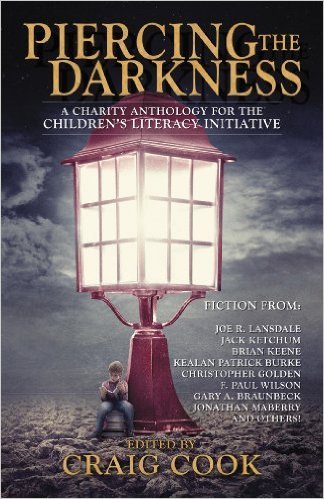
Published by Necro Publications and edited by Craig Cook, PIERCING THE DARKNESS is a charity anthology for the Children’s Literacy Initiative. It features stories by myself, Jonathan Maberry, Mary SanGiovanni, Joe R. Lansdale, F. Paul Wilson, Jack Ketchum, Lucy Snyder, Christopher Golden, Monica J. O’Rourke, Jeff Strand, Jonathan Janz, Ronald Malfi, Kealan Patrick Burke, and many more.
It has been available for the last two years in paperback, Kindle, and Nook, but that changes next week. PIERCING THE DARKNESS will go out of print at the end of the year (including the Kindle and Nook editions). It will never be available again.
December 22, 2015
“YOU BETTER WATCH OUT…”
December 19, 2015
LEVI STOLTZFUS: THE PATH BEHIND AND THE END OF THE ROAD
Have spent much of the past week mulling over the Levi Stoltzfus series. In interviews this past year, I’ve said there are two books left in the series.
I was wrong. There are three more books left in the series. Here is the break down:
DARK HOLLOW: Paperback – Kindle – Nook
GHOST WALK: Paperback – Kindle – Nook
A GATHERING OF CROWS: Paperback – Kindle – Nook
LAST OF THE ALBATWITCHES: Paperback – Kindle – Nook
INVISIBLE MONSTERS: Forthcoming 2016 (Levi versus Black Lodge and the New World Order)
BAD GROUND: Forthcoming 2017 (Levi goes to Centralia)
HOMECOMING: Forthcoming 2019 (Levi returns to the cornfield where it all began)
December 17, 2015
MUSINGS OF A MIDDLE-AGED WHITE GUY
NOTE: The following piece serves as the Introduction to THE DAUGHTERS OF INANNA, a limited edition hardcover anthology (edited by me) featuring four original novellas by Chesya Burke, Rachel Deering, Amber Fallon, and Livia Llewellyn. That book has now shipped to customers. This Introduction is offered in the hopes of convincing those who didn’t buy the anthology to go out and buy something else by these four authors.
As a kid—growing up in the late Seventies and early Eighties in a small, rural Pennsylvania town dominated by a paper mill and surrounded by forests, fields, and isolation—I assumed that all kids pretty much had the same sort of life I did. I assumed they were white, had white parents (including a father who busted his ass seven days a week at the paper mill and a mother who stayed at home), listened to country music or rock, were Methodist or maybe Lutheran, took a family vacation every year, and existed in a comfortable blue-collar middle class household.
Sure, I saw diversity on television. Sesame Street had Black and Latino kids, but the set of Sesame Street looked nothing like what was outside my window. To me, it was as unrealistic as an angry green guy living in a trash can or Bert continuing to put up with Ernie’s bullshit instead of stabbing him to death one night. And yes, I saw diversity in comic books. Ms. Marvel, Red Guardian, Falcon, She-Hulk, and Luke Cage were there every week when I rode my bike down to the newsstand for a new batch of twenty-five cent Marvels, but again—the world of the Marvel Universe looked nothing like my world.
It never occurred to me that somewhere, there was a black kid my age watching Mister Rogers or reading an issue of Justice League of America and saying, “This white person’s world looks nothing like my world.”
Let me tell you what my world looked like. I didn’t meet my first, live, in-the-flesh African American until 1983—which is not so long ago, kids. His family moved to our small town when we were sophomores in high school. To the best of my knowledge, they never experienced any sort of blatant racism—no crosses burning in their yard or epitaphs hurled at school—but they were outsiders all the same. They were curiosities. Something new had moved into our world, and none of us knew quite what to expect, or quite how to react to it. I was no different. I befriended the kid (Mike) but my conversations with him were primarily me asking variations of “So, you’re black? What’s that like?”
I graduated high school at seventeen. One week later, I was off to boot camp in San Diego. That was my first time truly seeing the world around me for what it really was – and seeing the people who inhabit that world for who they truly are. Boot camp was a mixing pot—Asian, Latino, White, Black—you name it, we were there, all occupying a small barracks no bigger than a two car garage, and learning to live with each other. And learning about each other. I quickly made friends with a guy from Compton and a guy from El Paso, and I soon learned that they were as curious about my world as I was theirs. Their conversations with me were primarily them asking variations of “So, you’re white? What’s that like?”
For four years, I traveled the world, and saw five of the seven continents. More importantly, I experienced different cultures and different people and different religions and different ways of living. I learned about poverty and wealth, and fairness and privilege. I learned that not every mother stayed at home—and some of the ones who did had no choice in the matter. I learned that not everyone was Methodist or even Lutheran. And I learned that my world—that world I’d grown up in—was just one small part of a much bigger, diverse place, and all of the people who inhabited that word had their own stories. And while all of us, as human beings, had things in common, those commonalities were shaped and informed by our different, unique experiences.
Everyone knows what it is to love, or to lose, or to hope, or fear. These are commonalities. But does a straight person know what it is to be LGBT? Does a white person know what it is to be black? Does a Muslim know what it is to be Jewish? Sure, maybe in an academic sense. But in a human sense, not so much. What we know is what we are exposed to. What we know is outside our window.
And in the entertainment we consume.
I am neither a Social Justice Warrior nor a Sad Puppy (if you don’t know what those are, then you haven’t been on the Internet in the past year, and for that, I fucking envy you). In truth, I find both groups equally annoying. In my opinion, both groups engage in the same false Left-Right/Conservative-Progressive dogmatic bullshit that has brought real and meaningful discourse in this country to a grinding halt.
What I am, is pro-diversity. Diversity should be championed by all, regardless of your political affiliation or any other identifier you and the social media tribe of your choice choose to use. Diversity informs. It educates. It helps us understand the other inhabitants of this planet—the people who don’t live outside our window, but are just as much a part of things as we are—a little better.
And in the entertainment we consume, diversity offers unique perspectives and fresh takes on tired, worn-out old tropes. As a white kid, I read about and identified with a white kid named Peter Parker who was secretly Spider-Man. Today, black and latino kids can read about and identify with a black and latino kid named Miles Morales who is secretly the new Spider-Man. The stories remain the same. There are the same struggles, the same villains, the same archetypes. But they are informed by a new perspective, a new view of the world, and that makes for invigorating reading.
In our own field, horror fiction has been way ahead of some our related genres in terms of diversity—both in the stories told and in the authors writing those stories. “But Brian,” someone is shouting from the back, “if we’ve reached the point of true diversity in horror, then why publish an anthology with only women? Why no men? That doesn’t seem fair.” Well, because I’m Brian Keene, and I’m lucky enough to have some power and a voice in this field, and I enjoy using that power and voice to support things I believe in. In this case, I believe in these four authors. Once you read them, I think you will, too.
Chesya Burke and Livia Llewellyn are undoubtedly familiar to some of you. Both have been writing and publishing in the genre for about a decade now, to considerable critical acclaim. Rachel Deering is known for her work in comics, where she’s earned several award nominations. Amber Fallon is a newcomer, with a handful of small press appearances. All of them deserve a wider audience. And you, dear reader, deserve to be reading them.
I mentioned earlier that in the entertainment we consume, diversity offers unique perspectives and fresh takes on tired, worn-out old tropes. That’s what happens in the four novellas you are about to read. All four authors have delivered uncomfortable, harrowing, gut-wrenching works of horror fiction, and each one has been informed by their own individual experiences and their own unique voice. Each one is the world outside their particular window.
That’s what good fiction is made of.
Take a look, if you dare…
Brian Keene
August 2015
November 27, 2015
THE GIRL ON THE GLIDER – Now Just 99 Cents
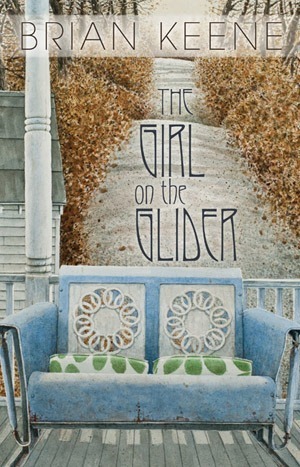 THE GIRL ON THE GLIDER, according to critics, is one of the best novellas I’ve ever written. And though I tend to ignore most reviews, good or bad (unless they are factually incorrect and say something like “Dark Hollow is a zombie novel” or “Trigger Warnings is all Blog entries”), in this case, I tend to agree with the critics. THE GIRL ON THE GLIDER is one of the best things I’ve ever written.
THE GIRL ON THE GLIDER, according to critics, is one of the best novellas I’ve ever written. And though I tend to ignore most reviews, good or bad (unless they are factually incorrect and say something like “Dark Hollow is a zombie novel” or “Trigger Warnings is all Blog entries”), in this case, I tend to agree with the critics. THE GIRL ON THE GLIDER is one of the best things I’ve ever written.
Previously, THE GIRL ON THE GLIDER was only available as a limited edition hardcover, which is now out of print. It was then reprinted in A CONSPIRACY OF ONE, another limited edition hardcover which is now also out of print. I made a digital version available for Kindle, Nook, and Kobo users, but there was no paperback version in print until this year, when it was included in WHERE WE LIVE AND DIE (which is in print and on sale now).
Since it is now available in WHERE WE LIVE AND DIE, I have reduced the price of the novella across Kindle, Nook and Kobo. You can now buy THE GIRL ON THE GLIDER for just 99 cents. This is not a Black Friday sale or limited time offer. This is a permanent price decrease. It has already taken affect on Kindle, and should take place on Nook and Kobo within the next twenty-four hours.
November 25, 2015
A PLACE TO RETIRE
Back in the early days of the Internet, I’m talking late-90s/early 00s, message boards were a thing — the evolutionary stage between the prehistoric Usenet and and the now archaic MySpace. This was a time of dial up modems and Internet service via CDs that AOL sent you in the mail like advertising circulars. If you were a fan of the horror genre, you had a handful of forums to choose from — Horrornet (which morphed into Shocklines), Masters of Terror (which morphed into Horror World), Gorezone, Gothic Net, and a few others. Later, around the time that MySpace became a thing, there were a few next-generation forums — places like The Red Light District and The Other Dark Place and Fangoria (who used to have a great message board).
But during that later phase, there were two genre-related boards that got especially high traffic and participation. If you were into comics — be it as a fan or a professional — you were probably hanging out on Warren Ellis’s old forum. And if you were into horror fiction — be it as a fan or a professional — you were probably hanging out on mine. Both had thousands of users, both had a team of tireless moderators, both were places where professionals and the readers who loved their stuff rubbed shoulders and had conversations and shared wisdom and knowledge. Both forums were responsible for a few marriages, a few births, and more than a few divorces. Both went through several incarnations. Both forums served as impromptu training grounds for aspiring artists who would go on to become some of today’s biggest names in comics and horror fiction.
Both forums shut down at roughly the same time. In the case of mine, it just became too big. I didn’t have the time or energy to devote to it, and by then, new things like Facebook and Twitter were starting to attract people. And so, I killed it.
A few years ago, I tried to launch a new one, and it went well for a few months. But I did something idiotic. I set myself up as the only Administrator, and one day, I wasn’t able to log in. I was, effectively, locked out of my own forum. Sure, I could create a new log-in, but one without any admin privileges like approving new members and banning trolls and all the other things a message board needs. The forum trickled on for a while, even without me there. Then, one morning, the moderators woke up and it was gone. Apparently, the hosting company killed it, due to the fact that no Admin had logged in in over a year.
Earlier this week on my podcast, Dave and I were talking about how The Horror Drive-In — one of the last old-school message boards still standing — had just celebrated a decade of existence. And that got us to reminiscing on the air about other forums, including mine. After we were done recording, I thought about it more, and realized that I really miss the message board experience. It’s still the best method of communicating online. Twitter is okay, yes. But Facebook is impossible. If I want to tell the 10,000 people who have Liked my Facebook page that I have a new book out, Facebook’s algorithms will actually only let me tell about 200 of those 10,000 people. If I want to reach more people than that, I have to pay for advertising. So, while Facebook might be a necessary evil, it’s also useless when it comes to real interaction and communication. Tumblr and Reddit are cesspools. Google+ is a ghost town. Instagram is hopping, but it’s hard to have a conversation when you’re only posting photographs.
So over the last week, we’ve been secretly building a new forum. (And I made long-time moderator Val a second Admin, just in case I get locked out this time).
Maybe you’re old, like me, and have fond memories of the message board days. Or maybe you’re young, and want to see how your parents used to interact with people on the internet. Whatever the case, there’s a new forum. Maybe I’ll be the only person who uses it. Maybe not. Consider it an experiment, if you like — fueled partly by nostalgia, partly for a yearning to scale back on social media and downsize and reconnect with the people who put me where I am today, and partly out of a desire to have a real community of friends and fans again, rather than strangers on Facebook and Twitter, half of whom I’m not sure should even be allowed to read books. All are welcome regardless of race, religion, gender, sexual persuasion, nationality, or political affiliation. There is only one rule: Don’t be a douche-bag. If you can follow that simple rule, if you can respect your moderators and your fellow board members, regardless of whether or not you agree with them, then you’re welcome here. If you can’t, then you are, in fact, being a douche-bag, and you will be cast back out to the social media wastelands from whence you came.
JOIN THE CONVERSATION HERE. Please note: Some Safari users report having trouble logging in. You may need to use a different browser.
If it turns out I’m not in there talking to myself, I expect you’ll see more of me there and less of me on social media in 2016 (except for Twitter, of course).





